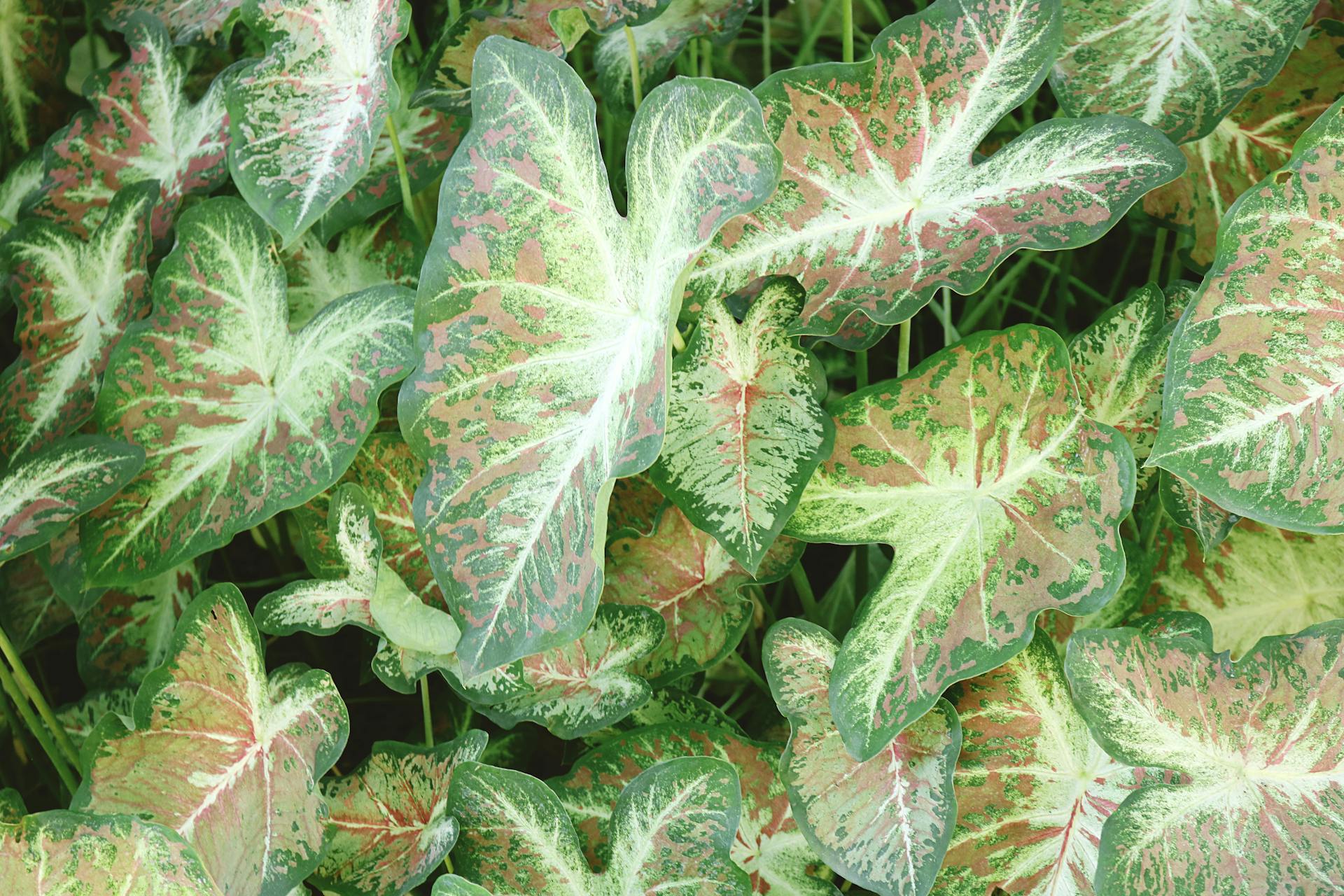
If your pothos is drooping, it is likely due to one of the following reasons:
1) Too much sun: If your pothos is getting too much direct sunlight, the leaves will start to droop and turn yellow.
2) Not enough water: If you're not watering your pothos enough, the leaves will start to droop and turn brown.
3) Too much water: If you're watering your pothos too much, the leaves will start to droop and turn yellow.
4) Not enough nutrients: If your pothos isn't getting enough nutrients, the leaves will start to droop and turn yellow.
5) Poor drainage: If your pot doesn't have good drainage, the roots of your pothos will start to rot, causing the leaves to droop and turn brown.
If your pothos is drooping, try to identify the cause and take corrective action. If you can't figure out the problem, or if the leaves remain droopy even after you've taken corrective action, take your pothos to a plant nursery or garden center for help.
Suggestion: Plants Leaves Drooping
Is there anything I can do to help my pothos recover?
Your pothos is likely to recover if you provide it with the optimal conditions for growth. These include bright, indirect light; well-draining, moist soil; and moderate temperatures. If your pothos is not recovering as quickly as you would like, there are a few things you can do to help it along.
One option is to fertilize your pothos with a balanced, water-soluble fertilizer. Be sure to follow the package directions, as over-fertilizing can harm your plant. Another option is to repot your pothos in fresh, well-draining potting mix. This can give your plant a boost of nutrients and help it to develop a stronger root system.
If your pothos is still struggling, you can try propagating it. This involves taking a stem cutting and rooting it in water or potting mix. Once the cutting has rooted, you can pot it up and care for it as you would a mature pothos plant.
With a little patience and care, your pothos is sure to recover and thrive.
On a similar theme: How Often Should I Water My Pothos?
What are some possible reasons for my pothos to start drooping?
Possible reasons for your pothos to start drooping could include:
1. Not enough water–If your pothos is not getting enough water, it will start to droop. Make sure to water your pothos regularly and keep the soil moist.
2. Too much water–If you are watering your pothos too much, the excess water will start to cause the leaves to droop. Be sure to allow the soil to dry out in between waterings.
3. Not enough light–Pothos need bright, indirect light in order to thrive. If your pothos is not getting enough light, it will start to droop. Move your pothos to a brighter location.
4. Too much heat–Pothos prefer cool temperatures and will start to droop if they get too hot. Make sure your pothos is not in a location where it will be exposed to too much heat.
5. Pests–Pests can cause a pothos to start drooping by feeding on the leaves or causing them to become damaged. Inspect your pothos regularly for signs of pests and remove them if found.
6. Disease–Certain diseases can cause a pothos to start drooping. Watch for signs of disease such as discolored leaves or stems, and contact a professional if you suspect your pothos has a disease.
By understanding the possible reasons why your pothos may start drooping, you can take steps to prevent it from happening. Keep an eye on your pothos and take action if you notice any of the above problems. With proper care, your pothos should stay healthy and thrive.
If this caught your attention, see: Water Pothos
Is my pothos getting enough water?
Pothos are a type of plant that need moist soil in order to thrive. They will typically reach for water when the soil around them becomes dry. There are a few ways to tell if your pothos is getting enough water. The leaves of the plant will begin to droop when they are thirsty and will perk up after they have been watered. The leaves may also start to turn yellow if the plant is not getting enough water. If you see either of these signs, it is time to water your pothos.
Pothos are not typically picky about the type of water they receive, although they prefer filtered or distilled water to tap water. They will also do well with rainwater. When watering your pothos, make sure to water the soil and not just the leaves. You can use a watering can or a spray bottle to evenly distribute the water. Be sure to empty any water that collects in the saucer beneath the pot to avoid root rot.
Pothos are easy to care for plants that make great houseplants. They are tolerant of a wide range of conditions, but thrive in humid environments. If you are unsure if your pothos is getting enough water, err on the side of caution and water it more frequently. With a little bit of care, your pothos will thrive and provide you with beautiful, green foliage.
See what others are reading: How Often Should I Water a Pothos?
Could my pothos be overwatered?
If you notice that your pothos' leaves are wilting, yellowing, or falling off, it could be a sign that you are overwatering your plant. Overwatered plants are more susceptible to root rot, which can kill the plant. If you think you may have overwatered your pothos, check the soil to see if it is waterlogged. If the soil is saturated and there is standing water in the pot, then your plant is overwatered. To save your plant, you will need to take it out of the pot and allow the excess water to drain. You may also need to trim off any leaves that are already damaged. If the roots are mushy or black, they may be too far gone to save. If the roots are still white and firm, your plant has a good chance of recovering. Allow the soil to dry out completely before watering your pothos again. If you're not sure whether your plant is overwatered or underwatered, it's always better to err on the side of too dry rather than too wet.
Here's an interesting read: Pothos Plant
What are the signs of an overwatered pothos?
As soon as you see any of these signs, it's time to take action to improve the drainage and air circulation around your pothos plant:
–Leaves that are yellow, wilted, and/or drooping
–Soil that is soggy or mushy
–Roots that are soft, rotten, or blackened
–A plant that is overall unhealthy looking
If you see any of these signs, it means that your pothos plant is overwatered. To fix the problem, you need to improve the drainage and air circulation around the plant.
Explore further: Dying Pothos Plant
How can I tell if my pothos is getting too much or too little water?
How can I tell if my pothos is getting too much or too little water?
This is a common question asked by pothos owners. While there are a few general guidelines you can follow, the best way to know for sure is to check the soil moisture level frequently. Here are a few tips on how to tell if your pothos is getting too much or too little water:
If the leaves of your pothos are wilting, yellowing, or drooping, this is a sign that it is not getting enough water.
If the leaves of your pothos are becoming soggy or limp, this is a sign that it is getting too much water.
If the leaves of your pothos are curling, this could be a sign of either too much or too little water. If the soil is too dry, the leaves will curl in an attempt to conserve water. If the soil is too wet, the leaves will curl in an attempt to prevent rot.
The best way to avoid overwatering or underwatering your pothos is to check the soil moisture level frequently. If the soil is dry, water your pothos. If the soil is wet, allow the plant to dry out before watering again.
What other factors could be affecting my pothos' health?
In addition to the possible causes of yellowing leaves on a pothos plant that were mentioned in the previous question, there are a few other potential culprits. One possibility is that the plant is not getting enough water. Pothos are drought-tolerant, so they don't need to be watering every day. However, if the leaves start to yellow, it could be a sign that the plant needs more water. Another possibility is that the plant is getting too much sun. Pothos plants prefer bright, indirect light, so if it is sitting in a spot that is too sunny, the leaves may start to turn yellow. Another factor that could be affecting the plant's health is the type of potting soil that is being used. Pothos plants prefer a well-draining potting mix, so if the soil is too dense or doesn't have good drainage, the plant may start to suffer. Finally, if the plant is not getting enough nutrients, this could also cause the leaves to turn yellow. If you are unsure about what could be causing the yellowing leaves on your pothos plant, it is always a good idea to consult with a certified nursery or a plant specialist.
Should I be concerned if my pothos is drooping?
Your pothos is a tropical plant, so it's used to humid conditions. If you notice your pothos drooping, it could be a sign that the air in your home is too dry. Lack of moisture in the air can cause the leaves of your pothos to droop and may eventually lead to leaf drop. You can increase the humidity around your pothos by placing it on a pebble tray or by using a humidifier. If you think the air in your home is too dry, you may also want to consider other houseplants that are more tolerant of dry conditions.
Frequently Asked Questions
Why are the leaves of my Pothos drooping?
There can be a few reasons the leaves of your Pothos may droop, including under watering or over watering, root rot, or low humidity. If the leaves are drooping because of dry air, place the pot in a saucer of water to increase humidity. If the leaves are drooping because of cold temperatures, wrap the plant in a scarf or blanket to conserve energy.
How do I know if my Pothos is dying?
The most common symptom of a dying Pothos is brown spots on the leaves, followed by drooping leaves. Old leaves that fall off easily may also point to a dying Pothos. Another indicator might be low humidity levels – when the air is dry, the plant cannot absorb water as efficiently and may suffer.
How do you fix a drooping Pothos?
Poor drainage can lead to drooping pothos. To fix the problem, you need to first unpot the plant and determine its root system. If the root system is healthy, you may only need to water the plant less often. However, if the roots are weak or dried out, you will need to water more frequently and add a balanced plant food to the watering dish. You can also install an irrigation system that provides better drainage for your pothos plants.
Why are my Pothos leaves turning yellow?
There are a few things that can cause your Pothos leaves to turn yellow. One common reason is if your plant isn’t getting enough water. When the leaves don’t get enough water, they will start to turn yellow. Another common reason why leaves may turn yellow is when there is insufficient light. If you are having trouble getting your pothos to grow, make sure that you have plenty of light and water it regularly.
Why are my Pothos leaves drooping or wilting?
There are a few reasons why your Pothos leaves may be drooping or wilting. Poor soil can lack the essential nutrients your Pothos needs in order to thrive, which will cause the leaves to droop. Other possible causes of drooping or wilting Pothos leaves include: - A Lupine weed is grabbing hold of your plant and paralyzing its growth. You can remove the Lupine weed by hand or garden spray. - Watering too often or too little - Over-watering trees and plants can lead to root rot, which results in wilting foliage. The best time to water a Pothos is when the top half inch of the soil becomes wet. Under watering can also causes foliage problems; wait at least two days after a rain before watering again. Water only when the surface of the pot is nearly dry (wet spots should drop 1/4 inch in 24 hours). - Removal of excess water from overly
Featured Images: pexels.com


